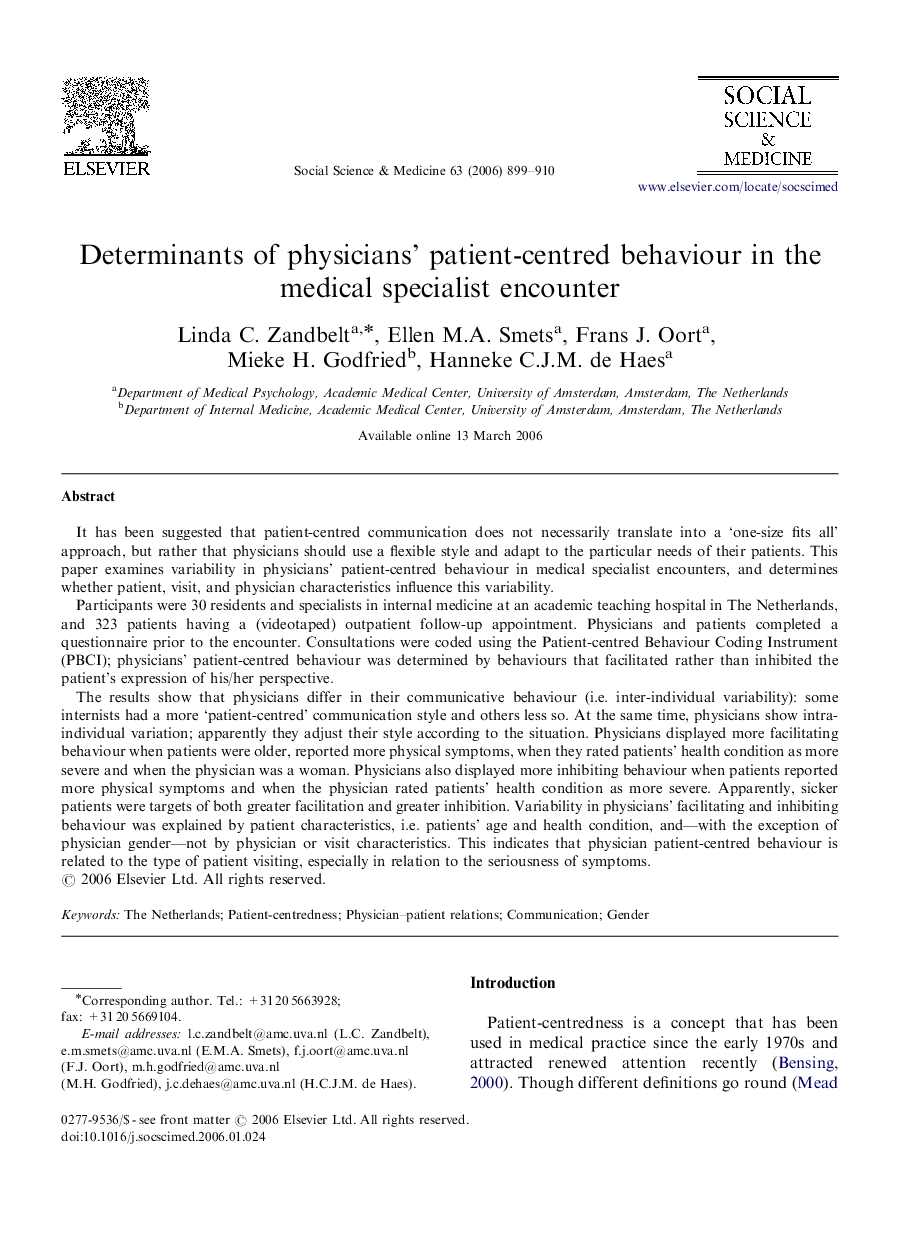| Article ID | Journal | Published Year | Pages | File Type |
|---|---|---|---|---|
| 954294 | Social Science & Medicine | 2006 | 12 Pages |
It has been suggested that patient-centred communication does not necessarily translate into a ‘one-size fits all’ approach, but rather that physicians should use a flexible style and adapt to the particular needs of their patients. This paper examines variability in physicians’ patient-centred behaviour in medical specialist encounters, and determines whether patient, visit, and physician characteristics influence this variability.Participants were 30 residents and specialists in internal medicine at an academic teaching hospital in The Netherlands, and 323 patients having a (videotaped) outpatient follow-up appointment. Physicians and patients completed a questionnaire prior to the encounter. Consultations were coded using the Patient-centred Behaviour Coding Instrument (PBCI); physicians’ patient-centred behaviour was determined by behaviours that facilitated rather than inhibited the patient's expression of his/her perspective.The results show that physicians differ in their communicative behaviour (i.e. inter-individual variability): some internists had a more ‘patient-centred’ communication style and others less so. At the same time, physicians show intra-individual variation; apparently they adjust their style according to the situation. Physicians displayed more facilitating behaviour when patients were older, reported more physical symptoms, when they rated patients’ health condition as more severe and when the physician was a woman. Physicians also displayed more inhibiting behaviour when patients reported more physical symptoms and when the physician rated patients’ health condition as more severe. Apparently, sicker patients were targets of both greater facilitation and greater inhibition. Variability in physicians’ facilitating and inhibiting behaviour was explained by patient characteristics, i.e. patients’ age and health condition, and—with the exception of physician gender—not by physician or visit characteristics. This indicates that physician patient-centred behaviour is related to the type of patient visiting, especially in relation to the seriousness of symptoms.
